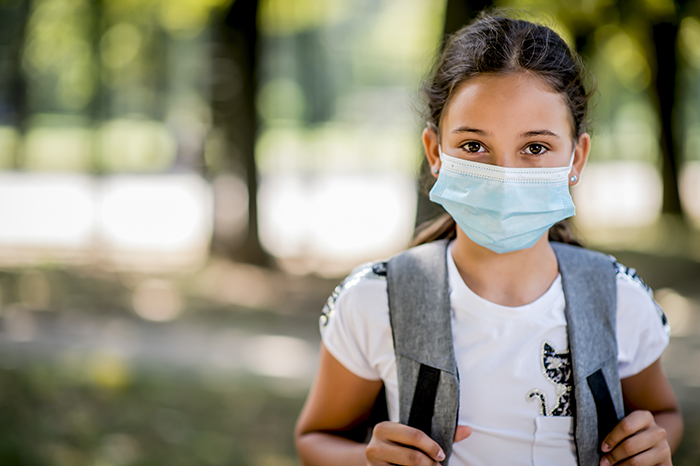After COVID-19: What are Kids’ Risks for MIS-C?

There’s one aspect about the coronavirus pandemic that makes people grateful. Children are far less likely to develop severe COVID-19 infection than adults.
Most infected young people experience mild symptoms, such as fever, runny nose, cough, vomiting, and diarrhea – or no symptoms at all. According to the Centers for Disease Control and Prevention (CDC), children are not a high-risk population for the virus and its complications.
However, as children and adolescents recover from COVID-19 infection, some develop multi-system inflammatory syndrome (MIS-C) weeks later.
MIS-C most commonly strikes those aged 1 to 14 years, although babies younger than one-year-old and adolescents up to age 20 can also be affected. Doctors and researchers don’t understand why some young people have gotten sick with MIS-C and others haven’t. It remains unknown if children with certain health conditions are more likely to develop MIS-C. What is clear?
The condition is triggered by COVID-19 infection, even in children who experienced little to no virus symptoms.
“After seeing more coronavirus infections in kids, we see more MIS-C in this population,” says Ivan Gonzalez, M.D., a pediatric physician with the University of Miami Health System who specializes in infectious diseases. “Fortunately, the numbers of MIS-C remain low overall, but we’ve started to see a few more.”
The CDC is reporting more than 2,500 cases of MIS-C in the United States since the pandemic began a year ago. Over 1,000 of those cases developed in the last four months.
What is MIS-C?
This syndrome involves swelling across multiple body systems and can lead to more severe complications.
Symptoms can vary, but the more common warning signs include:
- fever
- abdominal pain
- vomiting
- diarrhea
- neck pain
- rash
- bloodshot eyes
- feeling extra tired
If your child is experiencing any of these symptoms, contact your pediatric physician or an urgent care center. “If you suspect your child has an infection, it may be a good idea to get them tested to confirm it,” Dr. Gonzalez says. Tell your healthcare provider if your child, anyone in your household, or a member of your child’s classroom recently tested positive for COVID-19.
“Regardless of a confirmed COVID-19 infection, if a child has a fever for two days plus other signs like belly pain, they should be evaluated by their pediatrician to be safe,” Dr. Gonzalez says.
Don’t delay emergency medical care if your child has:
- trouble breathing
- pain or pressure in the chest that does not go away
- new confusion
- inability to wake or stay awake
- pale, gray, or blue-colored skin, lips, or nail beds, depending on skin tone
- severe abdominal pain
In rare cases, MIS-C has caused premature death.
How can I protect my child from MIS-C?
“Unfortunately, once a child catches COVID-19, there is no prevention from MIS-C that can be taken,” says Dr. Gonzalez. The best way to protect your child is by preventing your entire household from contracting COVID-19. The CDC offers these guidelines for parents during the pandemic.
Dr. Gonzalez reminds parents that “not all COVID-infected kids actually develop MIS-C. Every child is unique and, therefore, it’s impossible to predict who will develop MIS-C or a severe COVID infection.”
Dana Kantrowitz is a contributing writer for UMiami Health News.
Tags: covid-19 en Miami, Dr. Ivan Gonzalez, inflamación en niños, salud infantil
